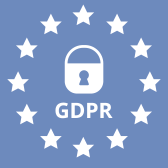
GDPR (General Data Protection Regulation) has already set guidelines for processing personal information within the European Union. This affects all companies that are planning to do business in the EU, and of course, the ones that are already established in the EU (yes folks, that includes US-based companies that process personal data, as well). It is predicted that GDPR will affect everything from website design, to the way data is stored/processed, to the user experience (UX).
Though the regulation covers a range of data security issues, but two main aspects that will affect user experience the most are user consent and user rights to manage or delete data.
GDPR also helps businesses to create meaningful and context-driven experiences. There is no doubt in the fact that a personalized experience is a better experience. We are going through a digital age where we are trying to personalize as many facets of digital experience as possible. A UX designer will help create a journey where data is exchanged or offered to inform user’s decisions. Listed below are a few things UX designers need to keep in mind:
Crafting a Design That Revolves Around User’s Private Life
One of the major occupants of this law is “Privacy by Design”. This simply means that the user experience and customer journey should respect the user’s private life from the starting and each action taken by the user should be directly relevant to their experiences on the website or app. It is therefore important to put yourself in the shoes of customers.
Providing Clear Choices Around Cookies
Users must understand how data is collected with the help of cookies. Along with it, the purpose should also be defined.. Users should be able to withdraw consent at any point of time.
Avoiding Misleading Checkboxes
Confusing opt-in or opt-out checkboxes are present almost on any website. Users don’t even know what they are signing up for. Under GDPR, data protection is a setting that is designed by default. So, a user who does nothing should be protected from opting in to just anything.
All those websites in which a pre-checked box is made available that subscribes customers to newsletters will no longer be allowed under the GDPR compliance. Designers need to unbundle every opt-in to make it clear for customers.
Be Clear – It is important to present privacy policy in simple language. Avoid using jargon. Also remaining authentic to the brand personality will add value. Designers should prevent policy in a way that educate audiences about who they are as an organization.
Do Not Ask For Overloaded Information – There are websites that ask for unlimited number of fields to be submitted in before heading to the purchase. All this information has nothing to do. So, stay relevant and straightforward.
Practice Minimalism – The moment you start capturing more data, you automatically increase your responsibility to store it securely. To reduce liability and workload, only save the data that is very important and of great use.
GDPR Suggestions for UX Designers – GDPR offers an elaborate set of regulations that directly affect the user experience.
Consent or Permission?
GDPR explains user consent as willingly agreeing to allow processing of individual data via an affirmative action. This means user has permitted a particular business or organization to collect data. There are several ways that can be used to make changes in the forms collecting data to make sure that they are consistent with the regulations:
- The need to understand present consent practices.
- Ensure that for every single user there is provision for withdrawing the permission easily.
- Identifying controllers that have been permitted to process data.
Rights of User to Manage or Delete Personal Data
GDPR offers a great opportunity for users to enjoy management of their personal data. It allows users to customize their preferences including deleting their accounts. It allows users to request permission for data deletion and can be provided by a response within 30 days.
GDPR Will Drive Better Website Design
GDPR adherence will definitely drive better design. An important part of web designing strategy is wireframing. During wireframing, an important element of GDPR compliance takes the center stage. Designers need to focus on core functional and user experience in the website design process.
Web designers need to create designs that navigate privacy clearly. Many websites and applications that are in sue these days bury the privacy settings so deep that most people can’t even find them.
As the designer community continues to evolve, GDPR privacy will become more accessible to users. Under GDPR, businesses need to employ a service-by-service approach to save data in browser cookies GDPR is emerging as a positive change for website designers. However, the law is not only enough to drive change. Overarching the design culture will help businesses to be more accessible, secure and privacy-focused in collecting and maintaining user data.
Final Words…
So, this is how GDPR will affect the user experience. With these aspects in mind, you need to adopt a solid data privacy. This will help in providing a safe user experience across multiple websites and platforms.
It will offer people a greater control over their data. GDPR essentially follows a set of guidelines for an authentic and increased user experience. The major objective should be to deliver experiences that keep users informed and make them feel safe while using the website. By following the GDPR guidelines, you will not only offer users a greater control over their privacy but also let them enjoy a quality-rich digital product.
Author Bio
Tom Hardy has hands-on experience as a digital marketing consultant. He currently works at Sparx IT Solutions – A GDPR Compliance Solution Provider that offers exceptional website auditing services to setup businesses with fully compliant GDPR policies. Tom also spends his time writing blog articles about GDPR compliance, and the necessary website/data security protocols that must be taken now that GDPR is being fully enforced.
